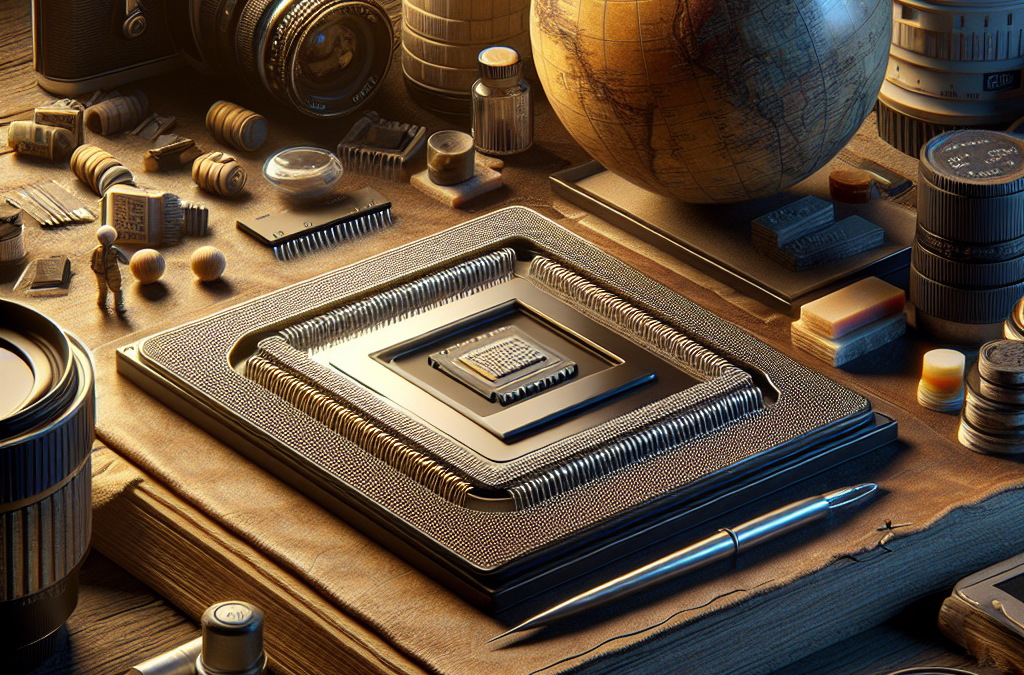
You Won’t Believe How the First Microchip Shaped Today’s World
The First Microchip: A Revolutionary Leap in Technology
When the first microchip was introduced, it marked a fundamental shift in how technology evolved. This tiny component condensed what once filled entire rooms into a small chip, unlocking possibilities that once belonged only to science fiction. Understanding the origins and impact of the first microchip reveals just how deeply it shaped today’s digital world, from our smartphones to complex space missions.
The concept might seem commonplace now, but the journey of the first microchip set the foundation for modern electronics and society’s digital transformation.
The Birth of the First Microchip: Context and Innovations
The Tech Landscape Before the Microchip
Before the first microchip emerged, electronic devices were bulky and limited. Computers were room-sized machines, and circuits were built using discrete components like vacuum tubes and transistors wired individually. This approach had significant drawbacks:
– High power consumption
– Large physical space requirements
– Frequent failures due to many connection points
– Limited processing speed and complexity
Engineers sought a way to miniaturize components and improve reliability. This quest set the stage for the invention of integrated circuits.
Who Invented the First Microchip?
The first microchip, also known as the integrated circuit (IC), was created independently by two inventors in the late 1950s:
– Jack Kilby at Texas Instruments: In 1958, Kilby demonstrated the first working integrated circuit using germanium. He assembled components on a single semiconductor piece, drastically reducing circuit size and complexity.
– Robert Noyce at Fairchild Semiconductor: Around 1959, Noyce developed a silicon-based integrated circuit with a planar process that facilitated mass production.
Though their approaches differed, both contributed to the foundation of microchip technology that revolutionized electronics.
How the First Microchip Transformed Industry and Everyday Life
A Revolution in Electronics Manufacturing
With the first microchip, manufacturing electronics shifted dramatically:
– Miniaturization allowed for compact devices
– Mass production techniques reduced costs and increased accessibility
– Reliability soared due to fewer mechanical connections
– Design complexity grew, enabling new functionalities
This enabled the rapid growth of consumer electronics, computing, and telecommunications industries.
Examples of Early Applications
The first microchip found use in industries and technologies that shaped the modern world:
– Early calculators and digital watches
– Avionics and space exploration systems, including NASA’s Apollo missions
– Automotive control systems improving safety and performance
– Military technology with enhanced reliability and efficiency
Each application demonstrated the versatility and power unlocked by microchip technology.
The Lasting Impact of the First Microchip on Modern Devices
Microchips Powering Personal Technology
Today, the influence of the first microchip is everywhere. Smartphones, tablets, laptops, and wearable tech all rely on integrated circuits derived from those early designs. Advancements include:
– Multi-core processors enabling high-speed computing
– System-on-Chip (SoC) designs integrating CPU, GPU, and memory
– Energy-efficient chips powering battery-dependent devices
The ongoing evolution traces directly back to the original microchip’s principles.
Embedded Systems and the Internet of Things (IoT)
The first microchip paved the way for the embedded systems behind IoT devices, which are now integral to smart homes, healthcare monitoring, and industrial automation.
Key developments include:
– Low-power microcontrollers enabling always-on sensors
– Wireless communication controllers for connectivity
– Security features embedded at the chip level for data protection
Every smart thermostat or fitness tracker is a descendant of the microchip legacy.
Challenges and Innovations Following the First Microchip
Scaling and Moore’s Law
The early success of the first microchip inspired efforts to pack more transistors onto chips. Gordon Moore predicted this would double roughly every two years, spurring vast industry investment.
Challenges encountered include:
– Managing heat dissipation with denser circuits
– Overcoming quantum effects at nanometer scales
– Fabrication complexity and costs rising sharply
Innovations like 3D chip architectures and new materials continue to push boundaries.
The Rise of Semiconductor Giants and Global Impact
Companies like Intel, AMD, and Samsung grew from the microchip’s invention, fostering an interconnected global supply chain.
This industry has:
– Created millions of jobs worldwide
– Fueled economic growth and innovation
– Spurred new fields in AI, robotics, and big data analytics
The trajectory starting with the first microchip has reshaped economies and cultural experiences globally.
Why the First Microchip Still Matters Today
The first microchip is much more than a historical artifact; it embodies human ingenuity and the power of innovation. Its core principles continue to influence:
– How we design future technology, including quantum computing and neuromorphic chips
– The accessibility of technology across all aspects of life
– The ongoing quest for sustainability through energy-efficient chip design
Understanding this legacy helps appreciate the depth of modern technology’s roots and inspires future breakthroughs.
Further Reading
For enthusiasts interested in delving deeper into the history and technology of microchips, resources like the [Computer History Museum](https://computerhistory.org) offer detailed archives and exhibits.
Reflecting on the First Microchip’s Legacy
The first microchip’s invention was a pivotal moment that reshaped the 20th and 21st centuries. From enabling the digital devices we rely on daily to driving innovation in every technology sector, its influence is everywhere.
By embracing miniaturization, efficiency, and integration, the first microchip unlocked a world of possibilities that continue to expand.
Explore how you can stay informed and engaged with technology’s rapid progress. Whether you’re a student, professional, or enthusiast, understanding these roots can enrich your perspective.
For technology insights, updates, or to connect with experts, visit khmuhtadin.com and join a community passionate about the future shaped by the first microchip.
